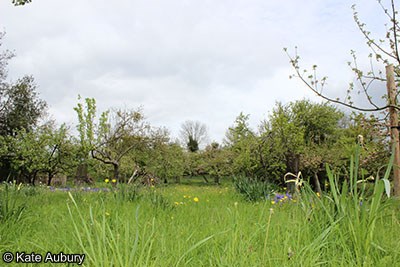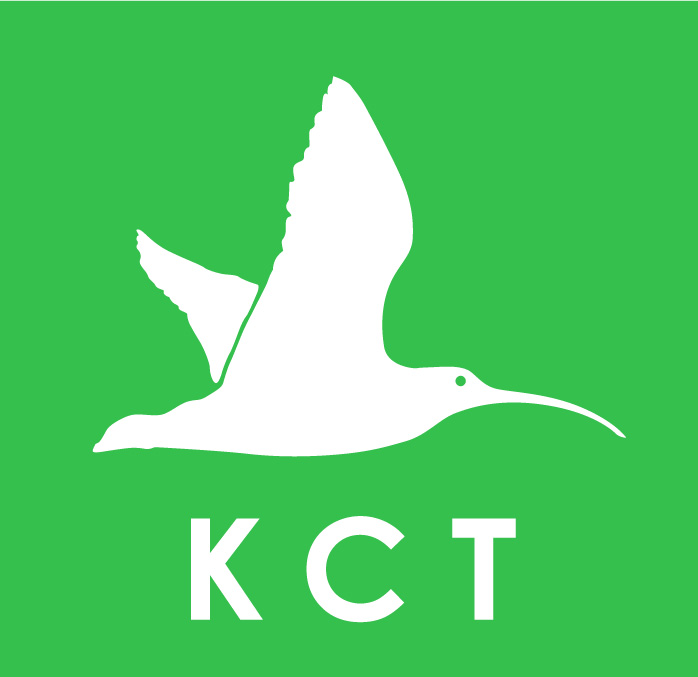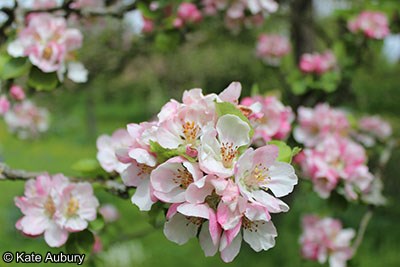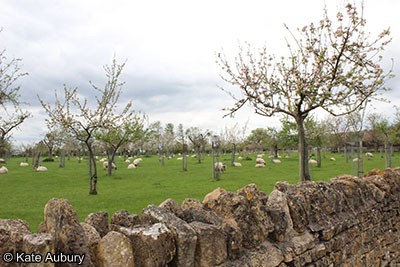Traditional orchards consist of unimproved pasture planted with veteran fruit trees, co-existing to form a species-rich, multi-layered ecosystem. Old fruit trees provide essential nesting habitat for rare birds, such as hawfinch, lesser-spotted woodpecker, spotted flycatcher and tree sparrow. This is also a particularly important habitat for saproxylic (wood-eating) invertebrates. Grassland between the fruit trees may form a diverse sward, similar to that of unimproved neutral pasture. Because of this ecological diversity, Traditional Orchards have been designated a Priority Habitat under the UK Biodiversity Action Plan (BAP).
Such orchards require active management. Fruit trees need to be pruned periodically to maintain longevity, and missing trees need to be replaced. Grassland needs to be grazed appropriately by cattle and sheep without the input of chemical fertilisers and pesticides. The Trust has helped to restore ten traditional orchards around Bredon Hill, an area once famous for its fruit production. The emphasis has been on conserving old varieties of apple, perry pear and damson, and in particular those which are native to Gloucestershire, Worcestershire and Herefordshire. For a detailed description of the restoration programme undertaken between 1989 and 2003 please see our orchard restoration page. Additional work was undertaken as a grant-funded project between 2009 and 2011. More details can be found here Orchard Project Report. A comprehensive list of the apple and pear varieties now grown by the Trust is available here. |
Daffurn’s Community Orchard, Kemerton
This small, attractive orchard was purchased by the Trust in 2000, using funds donated by local people. The 0.7 acre (0.3 ha) site is managed as a public open space by local volunteer group Kemerton Orchard Workers (KOW) with advice and assistance from the Trust. The orchard has a good mix of apple, plum, and perry pear trees. The grassland is floristically diverse and is managed by cutting hay in late summer. Bird boxes, bee hives, bat boxes and log piles help to enhance the biodiversity of the orchard. |
 Daffurn's Orchard Daffurn's Orchard
|











